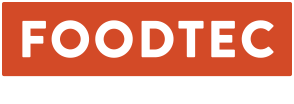Consumer expectations are changing all the time. Today, it’s digital experiences that have become the new normal with technology now a must-have for fast casual and quick serve restaurants. From online ordering to loyalty cards and rewards, offers, kiosks, mobile, push notifications, delivery and everything in between, all are expected experiences that customers now demand.
In a recent article featured on QSR Web, it denotes that digital experiences are dictated by Silicon Valley and apps are responsible for teaching consumers a new normal when it comes to service expectations. As the market continues to adopt this mindset, one area that many brands are suffering with attaining seamless digital quality of the experience that customers demand is of course, online ordering and delivery.
Time-strapped customers appreciate the ease and convenience of having their food available to order and delivered with the simple click of a button and with minimal effort on their part. Consumers expect restaurants to offer delivery, and for that delivery to feel integrated into the brand’s operations. In a BRP study, 71% of consumers said ease of ordering was important, yet the research revealed that less than half of restaurants meet these expectations. Not only that but Forbes reported that “delivery is the golden child of off-premise business and is expected to grow by 51 percent by 2021. Delivery has become a need to have and no longer a nice to have in the restaurant industry. It has become a consumer expectation.”
So, with this significant growth projected in the number of consumers who choosing to dine off premise, how can restaurants ensure they have the right tools in place to keep up with delivery expectations and give consumers the best experience possible?
Delivery Time: Since Uber can tell consumers exactly how long the wait time is for a ride, customers have become accustomed to seeing maps with little car icons keeping them up-to-date where their driver is located. This learned behaviour permeates into the food industry with consumers expecting a similar service experience when ordering take-out. While the exact GPS technology may not be 100% necessary, the technology can be tailored to suit customer expectations. By showing them the information that is most critical, such as acknowledgement of their order, arrival in the kitchen, then pick up for delivery, along with an expected ETA and countdown rather than that aforementioned map, will satisfy the digital needs of any famished customer.
Transparent Pricing: The article also reveals that transparent pricing in delivery is also important. If working with a third-party, a common strategy for restaurants is to charge higher prices for delivery items than what’s on the menu. But whether it’s a percentage or a flat rate it is better to be upfront with delivery price estimates so as consumers know what is happening financially. While some fear there is a risk that highlighting delivery charges could limit the growth of delivery sales, or they could turn off price-averse customers, companies that have included or raised delivery charges have said they’ve seen little impact, because the customers using the service are happy to pay for the convenience. “Technology has shown that it is better to be transparent about delivery costs than to increase the prices for delivery items… [delivery] is a convenience worthy of upcharge”
There is no doubt that food delivery is big business and Silicon Valley sets the bar of the digital economy that businesses must live up to. The good news is for those that embrace digital and put the right technology in place to meet shifting customer expectations, the benefits can mean real advances for the brand such as customer retention and market share. “Delivery is stickier than other applications…consumers tend to stick with the brands they understand and that understand them.”
Read the full article here.




